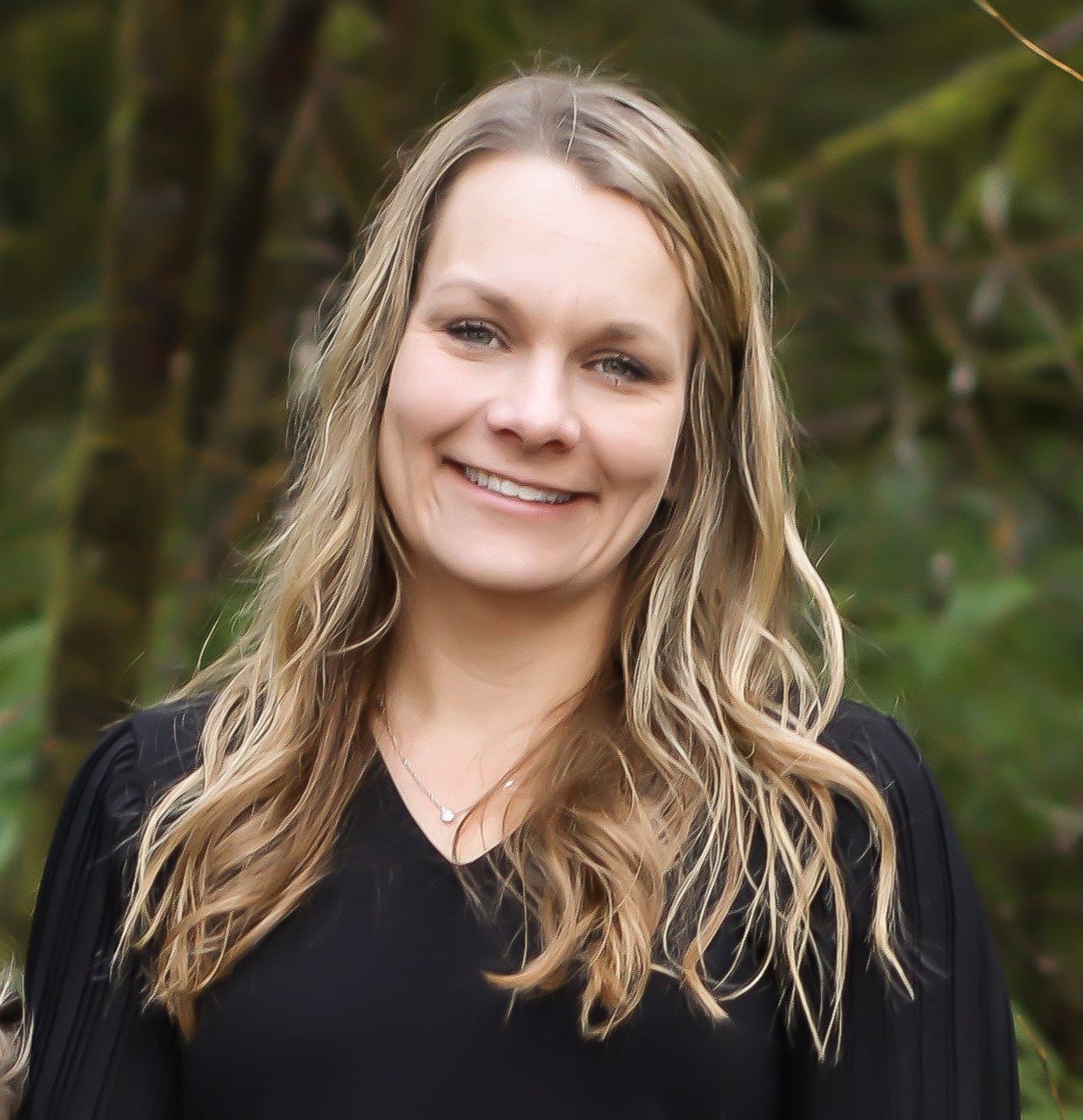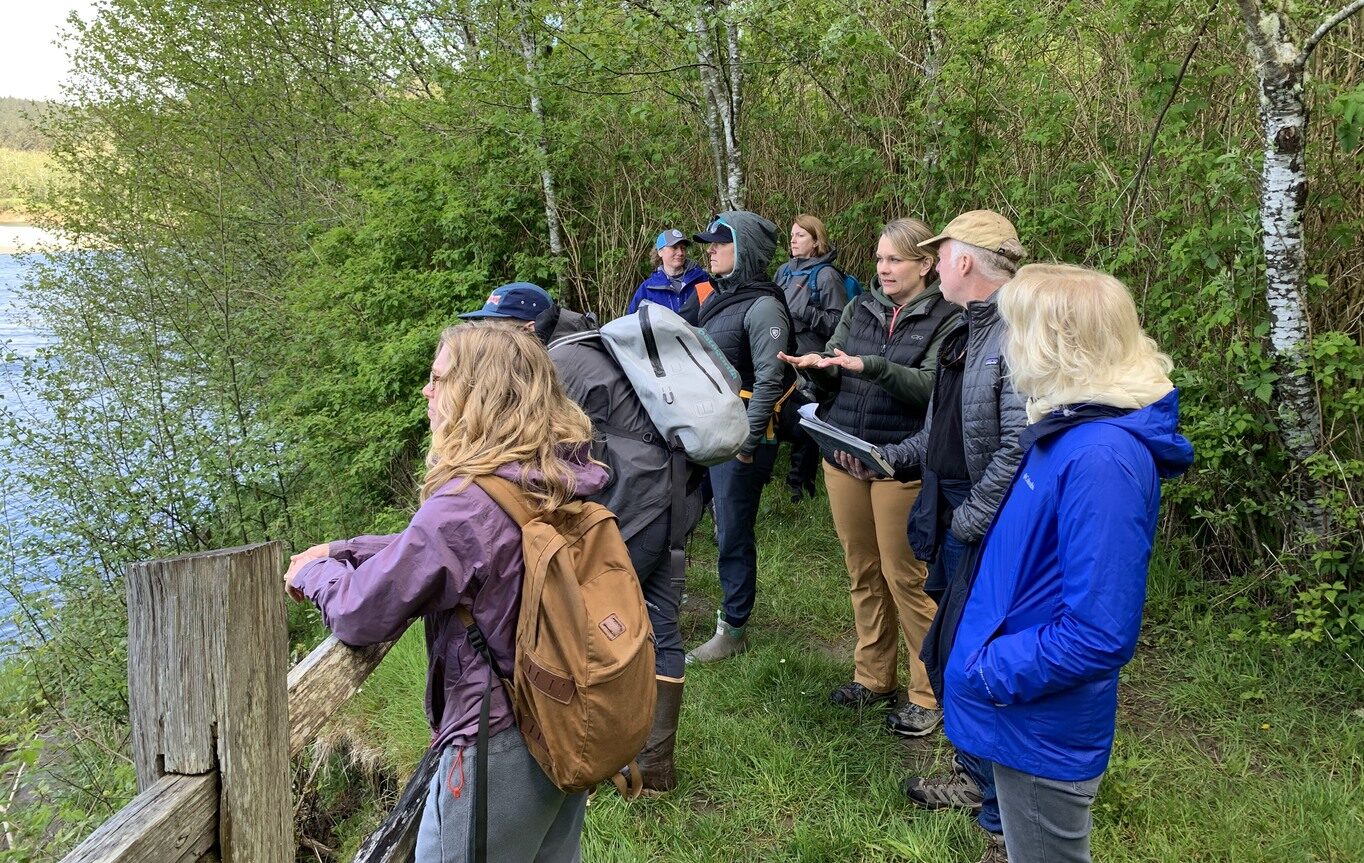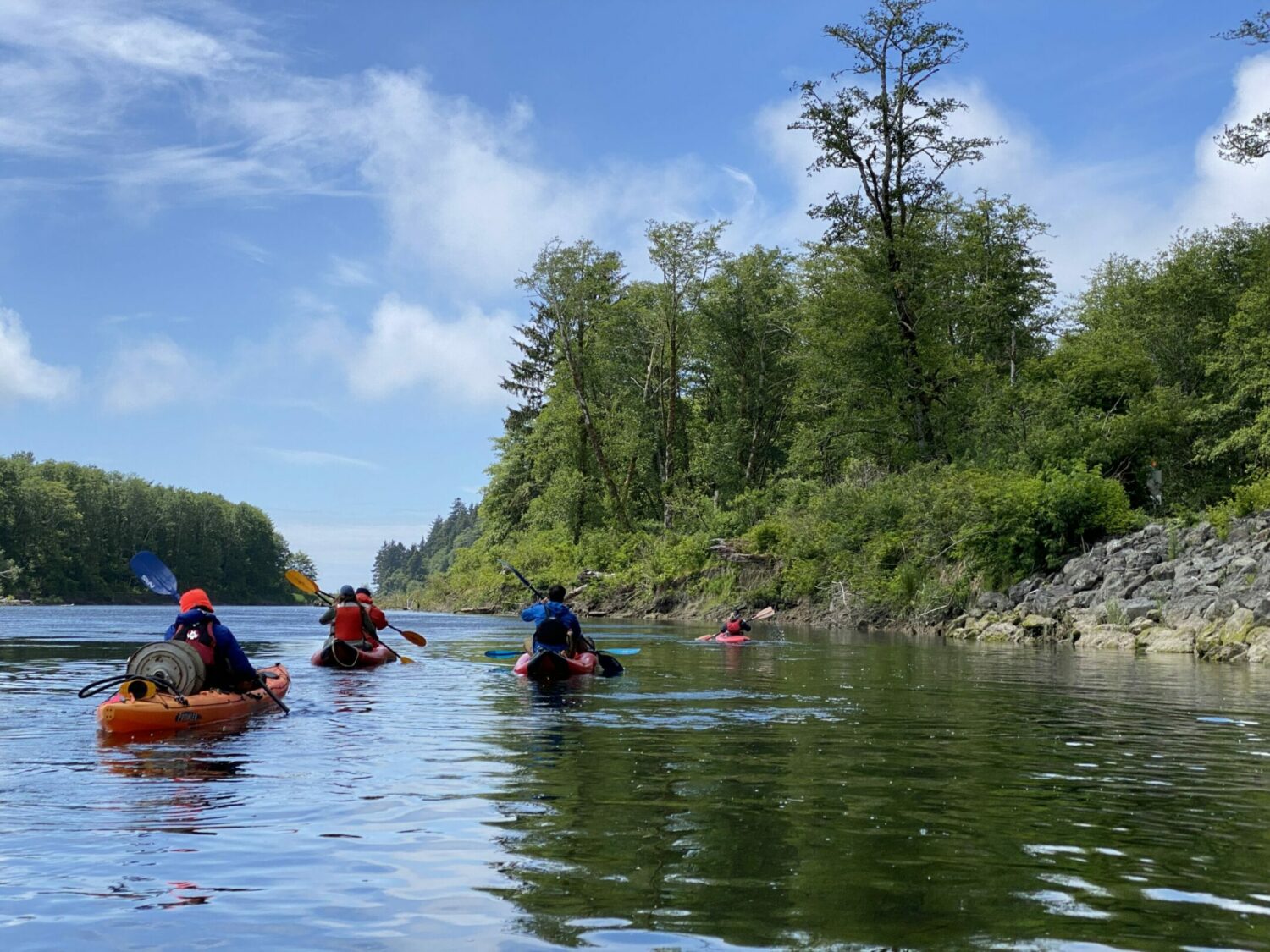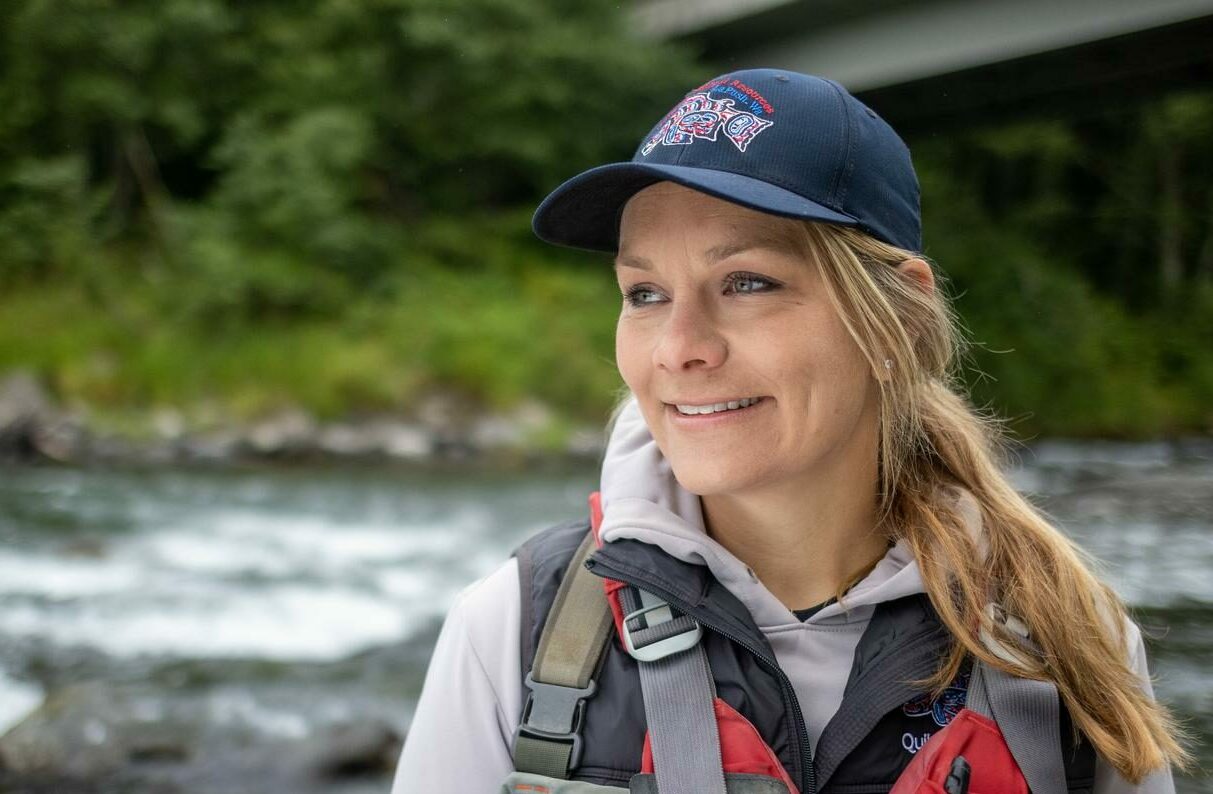Wild Salmon Center’s new fish habitat specialist brings rich experience and community relationships to our growing Washington Coast restoration team.

Growing up in Mount Rainier’s shadow near the foothills of Enumclaw, Washington, Nicole Rasmussen spent long days playing on the banks of Newaukam Creek. Often, she’d just stop and stare into the water, which teemed with darting invertebrates on inscrutable missions.
“I was fascinated by ecosystems,” she recalls. “Little did I know then that you could have a career literally snorkeling streams and counting fish.”
That fascination took Rasmussen from early volunteer work with Mid Sound Fisheries, a Seattle-based advocate for wild fish habitat, to internships with Weyerhaeuser and the U.S. Fish & Wildlife Service as she pursued her university degree.
Ultimately, ecosystems brought her back to the water: to rainy Forks, in the westernmost reaches of the Olympic Peninsula. For the past 16 years, Forks has been Rasmussen’s home base as she’s applied her skills as a water quality and habitat biologist for the Port Gamble S’klallam Tribe, Quinault Indian Nation, and the Quileute Tribe.
“On the OP, we can hunt and catch our own food, and teach our kids to do that,” says Rasmussen, an enrolled member of the Stockbridge-Munsee Band of Mohican Indians. “But it’s getting harder. I’ve seen the water get warmer, things get drier. I can’t imagine what it would be like to take salmon out of that equation—to not be able to see that life cycle with my own eyes.”

This twin sense of urgency and hope is woven into Rasmussen’s work. Over the past several years—first as a frequent Wild Salmon Center collaborator, and now as a member of WSC’s team herself—Rasmussen has walked and kayaked countless fish streams across the Washington Coast to inventory fish passage projects, assess road decommissioning, steer ambitious restoration campaigns, and build up sorely-needed data sets on water temperature, eDNA, and more.
As Wild Salmon Center’s newest Washington-based Fish Habitat Specialist, Rasmussen will draw on these deep skills and relationships to help speed and scale our coastal habitat restoration work.
“I’ve seen the water get warmer, things get drier. I can’t imagine what it would be like to take salmon out of that equation—to not be able to see that life cycle with my own eyes.”
WSC Fish Habitat Specialist Nicole Rasmussen

With Betsy Krier and Michelle Cramer, Rasmussen is part of a growing restoration team focused on achieving high-impact fish passage corrections through our Washington-based Cold Water Connection campaign. Rasmussen’s expertise comes as our campaign kicks into high gear. Thanks to waves of federal, local, and private funding, WSC and our partners are now channeling increasing resources into these job-creating local projects.
“It’s great—now I can go back to the Quinault and others and say, ‘I’m here to help, what do you need?’,” Rasmussen says. “We want to be that ultimate partner for Tribes and local communities. We can help make it happen, whether that’s project funding, design, engineering, or boots on ground.”
We’re thrilled to welcome Rasmussen to the team fulfilling these wild fish dreams. Together, we’ll aim to make sure that on the Washington Coast and beyond, salmon are always part of the equation.
“We want to be that ultimate partner for Tribes and local communities. We can help make it happen, whether that’s project funding, design, engineering, or boots on ground.”
WSC Fish Habitat Specialist Nicole Rasmussen
